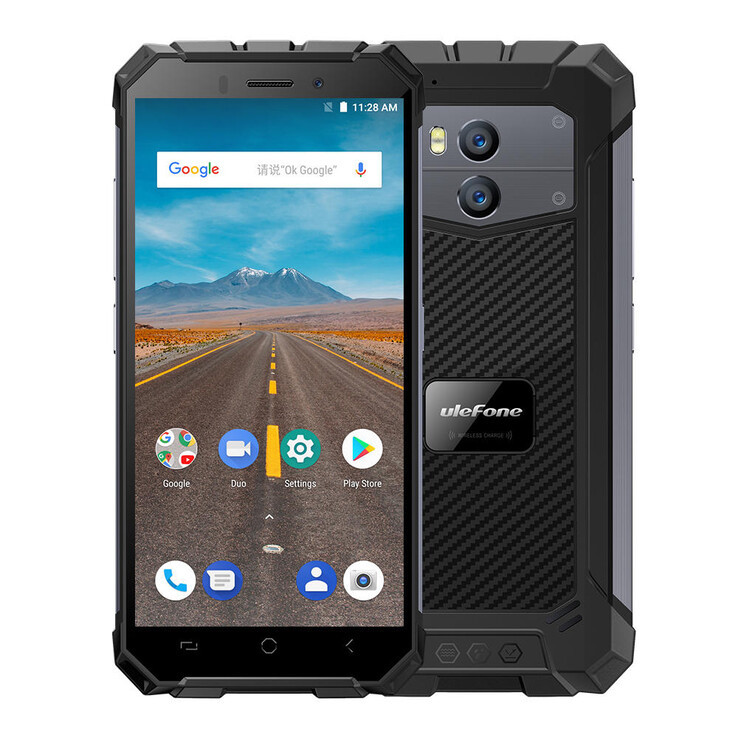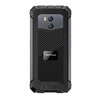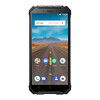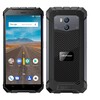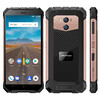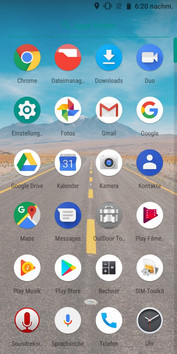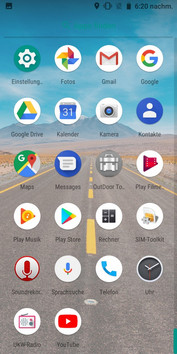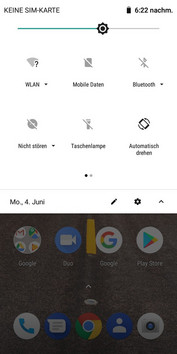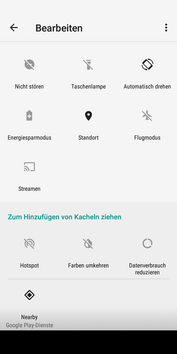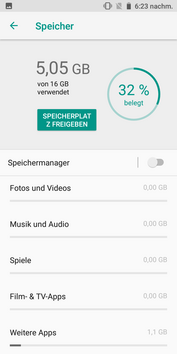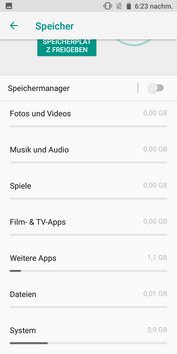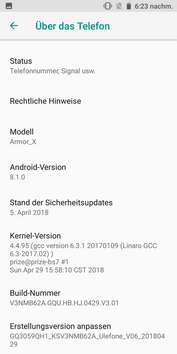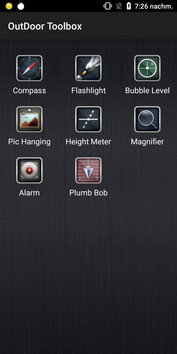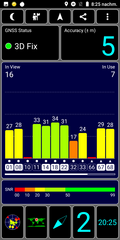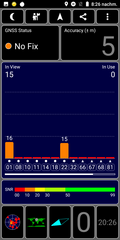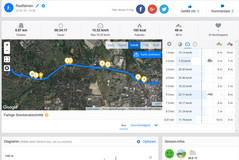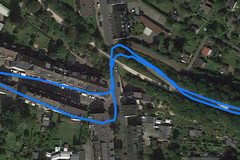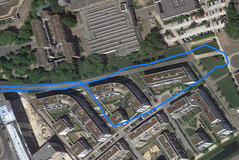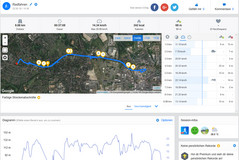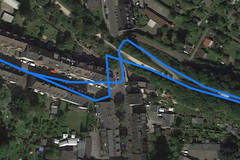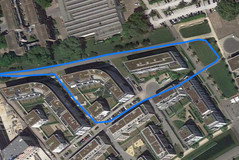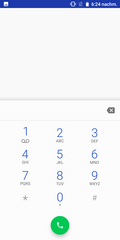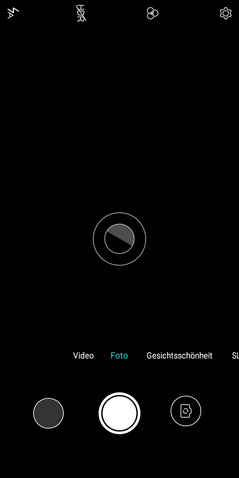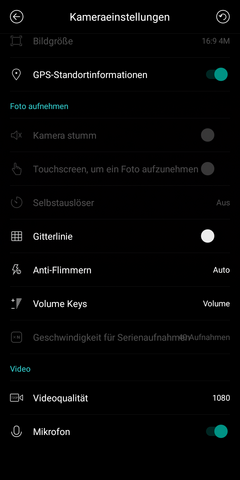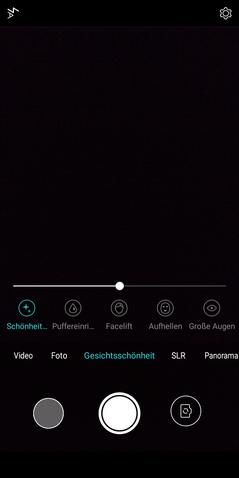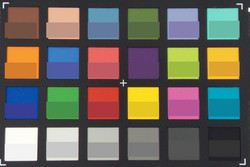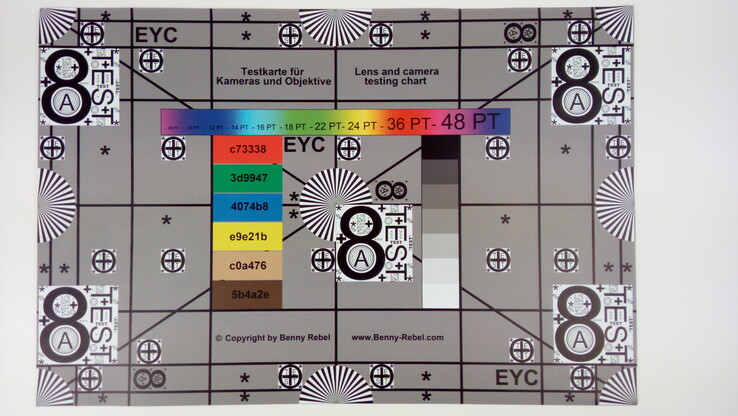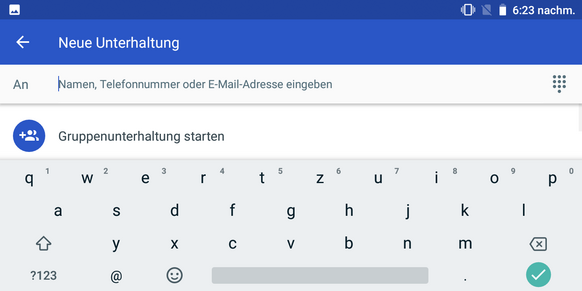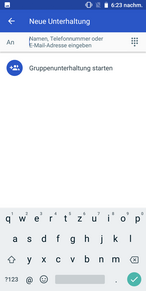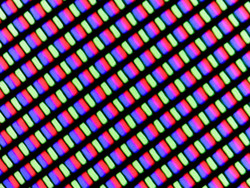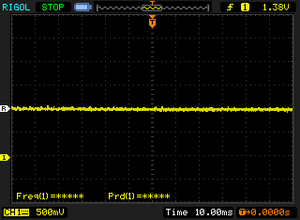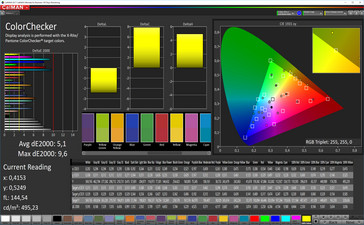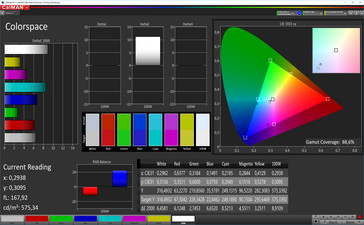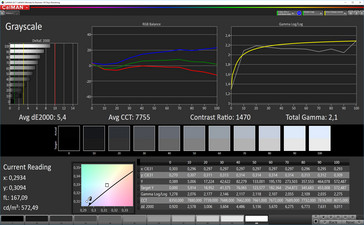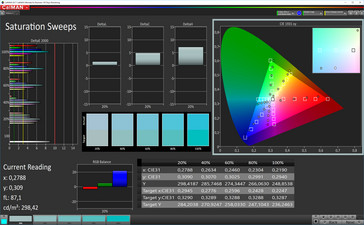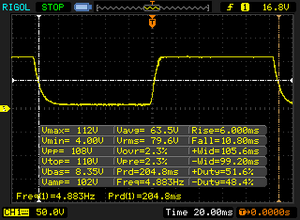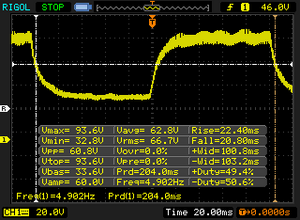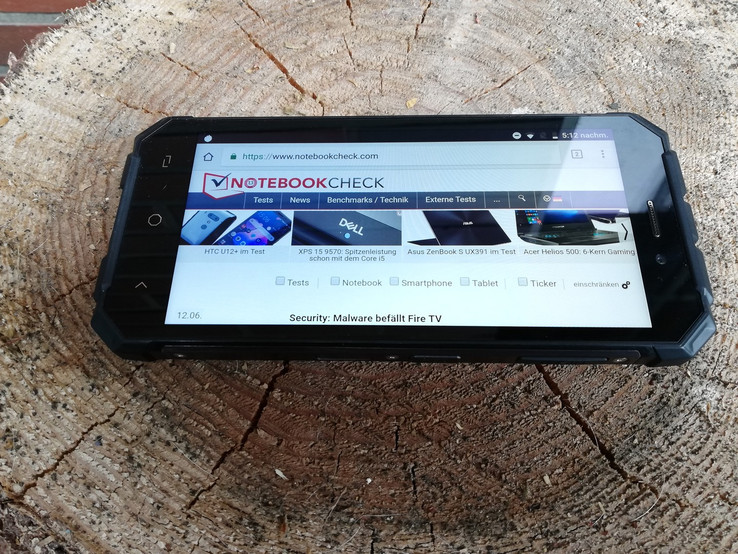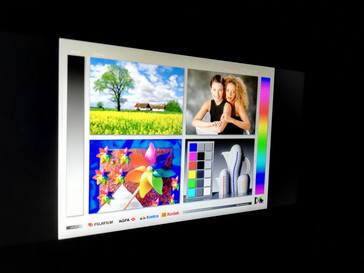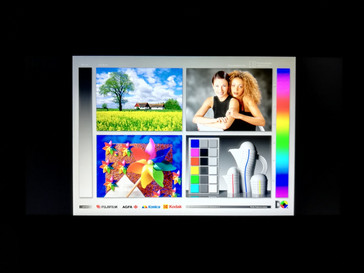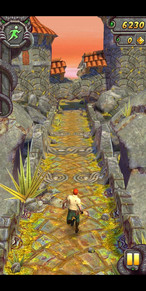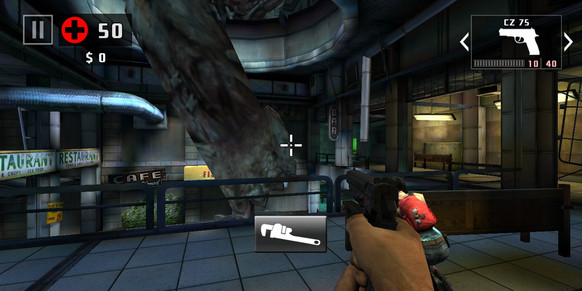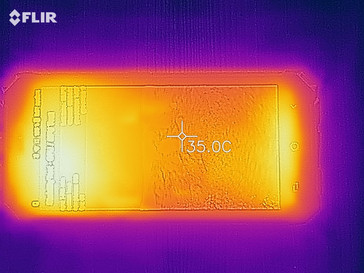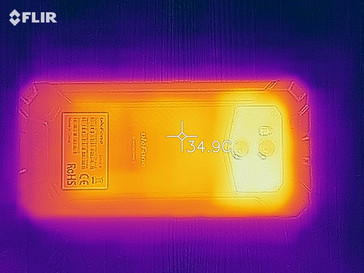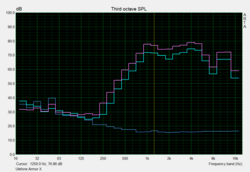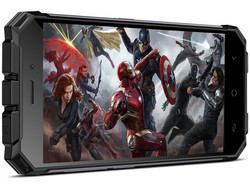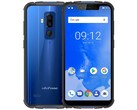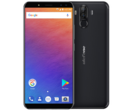Ulefone Armor X Smartphone Review
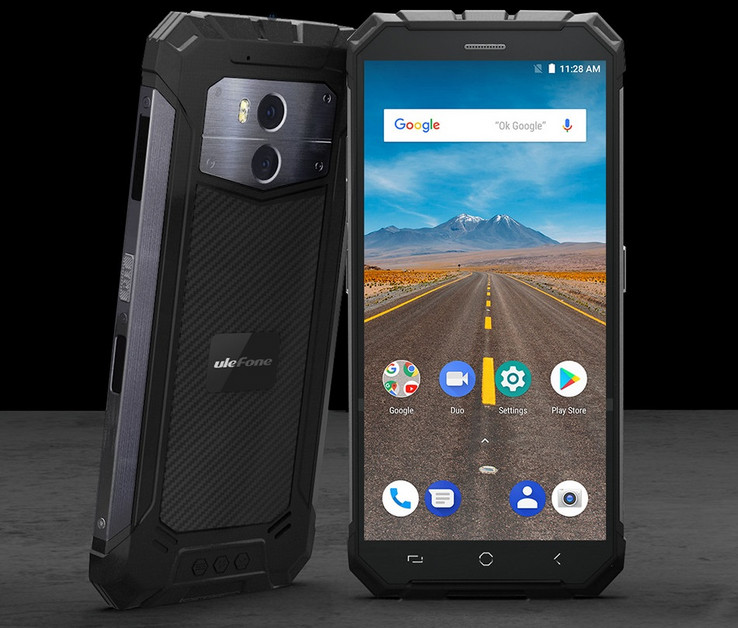
Until now, the Chinese smartphone manufacturer Ulefone had only a few devices represented in our test area. However, one thing the "Paris," "Metal," and "Power 3" models had in common is that they offered relatively good equipment for a low price. However, there were always some reasons for complaints such as the camera or the display.
Now the Ulefone Armor X not only tries to raise the equipment to a higher level, but also to be sufficiently robust for being suited for any outdoor use imaginable. Inside it has a Mediatek MT6739 SoC which is supported by a PowerVR GE8100 graphics unit. Both of these hardware components can be found in entry-level devices and rely on 2 GB of RAM and 16 GB of eMMC flash storage in the Armor X.
The main competitors of our test unit not only include affordable entry-level smartphones, but primarily robust outdoor devices. In our test, the Armor X must therefore face phones such as the Nomu M6, the Blackview BV9000 Pro, the Oukitel WP5000, and the CAT S31. The performance of all the comparison devices is in the lower mid-range. Only the Armor X is already equipped with Android 8.
Case - Chinese IP68 smartphone
Ulefone uses a robust plastic case in the Armor X, which is enforced on the sides and around the dual camera with metal. All the control elements and connections are waterproof to fulfill the requirements of the IP68 certification. In order to open the port covers, you need a special tool, like a flat-head screwdriver, which is included with the phone. Our subjective impression of the Armor X is very good. The case really appears to be able to withstand water, sand, and drops.
In addition to the black color of our test unit called "Dark Gray," the Ulefone Armor X is also available in "Rose Gold" color. Due to the 2:1-format, the width of the hefty device is not too extreme, so you can still operate it with one hand. However, short thumbs will have the problem that they cannot cover the whole width of the display.
Equipment - Robust entry-level smartphone
Ulefone has equipped the Armor X with the MT6739 entry-level SoC from Mediatek and a PowerVR GE8100 GPU. Together with 2 GB of RAM and 16 GB flash storage, the users have what is necessary for smooth system operation. In addition to the IP68 certification we already mentioned, the Ulefone Armor X has a fingerprint sensor and a push-to-talk button on the right side, as well as a wireless-charge sensor on the back. Behind a waterproof cover is the SIM card slot where you can insert either a NanoSIM and an SD card or two NanoSIM cards.
There is a 3.5 mm port to connect a headset or external audio devices. The charging cable is connected via a micro-USB port, which can also be used for data transfer with the USB-2.0 standard.
Software - Outdoor smartphone with Android 8.1
Users of the Ulefone Armor X get an unmodified version of Android 8.1 with the security patches on the level of April 5, 2018. The only software addition from the manufacturer is an Outdoor Toolbox app with tools such as a compass, a level, and a plumb bob. If more than one user needs to get access to the Armor X, you can set up various user accounts. We were unable to find any indication of being able to move apps to an SD card or formatting the storage cards as internal storage in the settings menu.
Communication and GPS - Ulefone Armor X with LTE
The Ulefone Armor X can connect to GSM, 3G, and LTE networks. All the usual networks in Germany are supported, including the LTE band 20, which is not a given in Chinese smartphones. With the corresponding network coverage, we did not notice any abnormalities in the reception. In addition, there are Bluetooth 4.1 and an NFC sensor for data transfer in close proximity.
While our test unit can access WLAN networks using the 2.4 and 5-GHz bands, the users have to do without the fast ac standard. During our testing, the Armor X achieves data transfer rates of about 100 MBit/s and thus positions itself in the middle of the field of our comparison devices.
| Networking | |
| iperf3 transmit AX12 | |
| Oukitel WP5000 | |
| Ulefone Armor X | |
| Blackview BV9000 Pro | |
| Nomu M6 | |
| CAT S31 | |
| iperf3 receive AX12 | |
| Oukitel WP5000 | |
| Blackview BV9000 Pro | |
| Ulefone Armor X | |
| CAT S31 | |
| Nomu M6 | |
The Armor X can use GPS and GLONASS to locate its own position. We were able to determine our location outdoors with an accuracy up to 5 meters (~16.4 ft) with the GPS Test app. Indoors we lost the connection very quickly and were unable to reestablish it.
The GPS in our test unit has to prove itself in our obligatory bike tour, where we compare its measured route with that of the Garmin Edge 500. It turns out that the locating works sufficiently well when the view is clear. But, as soon as some houses or small overpasses hinder the satellite signal, the Armor X is not able to record the route accurately anymore.
Telephone Functions and Voice Quality - Hollow voice quality in the Armor X
Ulefone uses the standard Android app for phone calls, which can be operated as usual. While the conversation partners sound a little hollow, they are still easily understandable. Things look different in the speakerphone function, where voices sound very tinny and distort from as low as slightly above 50% volume. Therefore, while the volume is theoretically very high, at that level, the speaker is mostly an unpleasant scratchy noise.
Cameras - Ulefone outdoor smartphone for simple snapshots
Ulefone has equipped the Armor X with an 8+5 MP dual camera system on the back and a 5 MP front camera. With the latter, you can record selfies in mediocre quality. In addition, the fixed focus requires a long arm, since otherwise the images become blurry. With an aperture of 2.4, the light sensitivity also leaves something to be desired, causing indoor pictures to turn out slightly too dark in regular daylight.
The main camera also records images too dark, the details appear slightly washed out, and the color transitions are blurry. While close-ups turn out slightly more detailed, when looking closer, the details are hardly reproduced either. In bad light conditions, the camera becomes almost unusable. The recorded object can hardly be seen and is also blurry. The options menu hardly offers any manual settings to counteract this. Besides the image quality and a glimmer filter, there are hardly any adjustment options worth mention.
The picture of the ColorChecker Passport confirms the impression of our test images: the camera of the Armor X records colors too dark, with dark gray and black tones appearing slightly too bright. While this problem remains under controlled light conditions, the effect is not as strong anymore. The reproduction of our test chart is sharp with all the details in the center and becomes blurry only at the bottom edges.
Accessories and Warranty - Chinese smartphone with wireless charging
The box of the Armor X includes a SIM tray tool, a tool to open the port covers, and the USB quick charger with the corresponding MicroUSB cable. Ulefone also includes a protective display cover in the smartphone package. Since the Armor X is equipped with a wireless charge sensor, Ulefone also offers a charging pad that is compatible with the Qi standard and can be purchased for about $20 in black or white colors.
Ulefone offers a warranty period of 12 months to the buyers of the Armor X. Please see our Guarantees, Return policies and Warranties FAQ for country-specific information.
Input Devices and Operation - GBoard in the Ulefone Armor X
Google's GBoard is available to the users of the Armor X for the input of text messages. This allows you to enter text quickly and without complications, with the vibration feedback hardly being noticeable. Even though the virtual keys are a little further apart in landscape format, they can be easily reached with both thumbs. The touchscreen responds to input directly and does not show any irregular behavior.
The fingerprint sensor on the right side of the Chinese smartphone responds very quickly and can be reached easily. During our testing period, we rarely missed the right position with the thumb the first time. Unlocking the device in this way does not take any longer than swiping over the screen from the bottom to the top.
Display
For the display of the Armor X, Ulefone uses an IPS panel with a resolution of 1440x720 pixels. With a brightness of about 540 cd/m² in combination with the rest of the measurements, the display is adequate for this device class. In order to fulfill the requirements outdoors, Ulefone has equipped the Armor X additionally with Corning Gorilla Glass 3.
| |||||||||||||||||||||||||
Brightness Distribution: 91 %
Center on Battery: 564 cd/m²
Contrast: 1524:1 (Black: 0.37 cd/m²)
ΔE ColorChecker Calman: 5.1 | ∀{0.5-29.43 Ø4.79}
ΔE Greyscale Calman: 5.4 | ∀{0.09-98 Ø5}
88.6% sRGB (Calman 2D)
Gamma: 2.1
CCT: 7755 K
| Ulefone Armor X IPS, 1440x720, 5.5" | Nomu M6 IPS, 1280x720, 5" | Oukitel WP5000 IPS, 1440x720, 5.7" | Blackview BV9000 Pro IPS, 1440x720, 5.7" | CAT S31 IPS, 1280x720, 4.7" | |
|---|---|---|---|---|---|
| Screen | -5% | -73% | -12% | 10% | |
| Brightness middle (cd/m²) | 564 | 610 8% | 506 -10% | 621 10% | 784 39% |
| Brightness (cd/m²) | 541 | 578 7% | 503 -7% | 598 11% | 750 39% |
| Brightness Distribution (%) | 91 | 90 -1% | 86 -5% | 91 0% | 92 1% |
| Black Level * (cd/m²) | 0.37 | 0.31 16% | 0.97 -162% | 0.64 -73% | 0.45 -22% |
| Contrast (:1) | 1524 | 1968 29% | 522 -66% | 970 -36% | 1742 14% |
| Colorchecker dE 2000 * | 5.1 | 6.8 -33% | 9.4 -84% | 5.5 -8% | 4.28 16% |
| Colorchecker dE 2000 max. * | 9.6 | 13.4 -40% | 19.9 -107% | 10 -4% | 8.75 9% |
| Greyscale dE 2000 * | 5.4 | 6.8 -26% | 13 -141% | 5.1 6% | 6.1 -13% |
| Gamma | 2.1 105% | 2.08 106% | 2.59 85% | 2.52 87% | 2.49 88% |
| CCT | 7755 84% | 8003 81% | 10219 64% | 7362 88% | 7175 91% |
* ... smaller is better
Screen Flickering / PWM (Pulse-Width Modulation)
| Screen flickering / PWM not detected | |||
In comparison: 53 % of all tested devices do not use PWM to dim the display. If PWM was detected, an average of 8152 (minimum: 5 - maximum: 343500) Hz was measured. | |||
Our measurements attest to a good contrast ratio of 1524:1 and a mediocre black value of 0.37 for the Armor X. In everyday life, these results show in well-delineated colors, although the black tones do not appear very saturated. In addition, the portion of blue tones is too high in the display, while the red tones are represented too little.
Display Response Times
| ↔ Response Time Black to White | ||
|---|---|---|
| 16.8 ms ... rise ↗ and fall ↘ combined | ↗ 6 ms rise | |
| ↘ 10.8 ms fall | ||
| The screen shows good response rates in our tests, but may be too slow for competitive gamers. In comparison, all tested devices range from 0.1 (minimum) to 240 (maximum) ms. » 37 % of all devices are better. This means that the measured response time is better than the average of all tested devices (20.3 ms). | ||
| ↔ Response Time 50% Grey to 80% Grey | ||
| 43.2 ms ... rise ↗ and fall ↘ combined | ↗ 22.4 ms rise | |
| ↘ 20.8 ms fall | ||
| The screen shows slow response rates in our tests and will be unsatisfactory for gamers. In comparison, all tested devices range from 0.165 (minimum) to 636 (maximum) ms. » 71 % of all devices are better. This means that the measured response time is worse than the average of all tested devices (31.7 ms). | ||
The Armor X can be easily used outdoors. In shady areas or on cloudy days, the display contents are easily readable due to its sufficient brightness. However, the display cannot compete with direct sunlight, and in addition, there are also reflections of the surroundings or the sky, making the contents hard to see.
Performance - Entry-level smartphone with Android Oreo
The performance of the Ulefone Armor X is targeted towards users with lower demands. The built-in Mediatek MT6739 SoC is designed for simple smartphones, and so is the integrated PowerVR GE8100 graphics unit. Together with 2 GB RAM and 16 GB eMMC flash storage, the components of the Armor X can ensure a smooth operation of Android Oreo version 8.1.
In the benchmarks, our test unit performs in the lower middle of the field of the comparison devices, and in graphics-heavy tests, it often only suffices for last place. Compared to the results of other devices with the Mediatek MT6739, the Armor X achieves values that are slightly below the average.
| AnTuTu v6 - Total Score (sort by value) | |
| Ulefone Armor X | |
| Nomu M6 | |
| Oukitel WP5000 | |
| Blackview BV9000 Pro | |
| CAT S31 | |
| Average Mediatek MT6739 (25012 - 38060, n=13) | |
| AnTuTu v7 - Total Score (sort by value) | |
| Ulefone Armor X | |
| Nomu M6 | |
| Oukitel WP5000 | |
| Average Mediatek MT6739 (26874 - 46951, n=13) | |
| PCMark for Android | |
| Work performance score (sort by value) | |
| Ulefone Armor X | |
| Nomu M6 | |
| Oukitel WP5000 | |
| Blackview BV9000 Pro | |
| CAT S31 | |
| Average Mediatek MT6739 (3742 - 5136, n=11) | |
| Work 2.0 performance score (sort by value) | |
| Ulefone Armor X | |
| Nomu M6 | |
| Oukitel WP5000 | |
| Blackview BV9000 Pro | |
| CAT S31 | |
| Average Mediatek MT6739 (2467 - 5377, n=16) | |
| GFXBench 3.0 | |
| on screen Manhattan Onscreen OGL (sort by value) | |
| Ulefone Armor X | |
| Nomu M6 | |
| Oukitel WP5000 | |
| Blackview BV9000 Pro | |
| CAT S31 | |
| Average Mediatek MT6739 (4.4 - 10, n=16) | |
| Average of class Smartphone (18 - 166, n=159, last 2 years) | |
| 1920x1080 1080p Manhattan Offscreen (sort by value) | |
| Ulefone Armor X | |
| Nomu M6 | |
| Oukitel WP5000 | |
| Blackview BV9000 Pro | |
| CAT S31 | |
| Average Mediatek MT6739 (2.2 - 2.8, n=14) | |
| Average of class Smartphone (12 - 606, n=158, last 2 years) | |
| GFXBench 3.1 | |
| on screen Manhattan ES 3.1 Onscreen (sort by value) | |
| Ulefone Armor X | |
| Nomu M6 | |
| Oukitel WP5000 | |
| Blackview BV9000 Pro | |
| Average Mediatek MT6739 (2.6 - 6.7, n=16) | |
| Average of class Smartphone (11 - 166, n=159, last 2 years) | |
| 1920x1080 Manhattan ES 3.1 Offscreen (sort by value) | |
| Ulefone Armor X | |
| Nomu M6 | |
| Oukitel WP5000 | |
| Blackview BV9000 Pro | |
| Average Mediatek MT6739 (1.3 - 1.7, n=16) | |
| Average of class Smartphone (8.4 - 413, n=158, last 2 years) | |
| GFXBench | |
| on screen Car Chase Onscreen (sort by value) | |
| Ulefone Armor X | |
| Oukitel WP5000 | |
| Blackview BV9000 Pro | |
| Average Mediatek MT6739 (1.1 - 2.6, n=15) | |
| Average of class Smartphone (5.5 - 154, n=160, last 2 years) | |
| 1920x1080 Car Chase Offscreen (sort by value) | |
| Ulefone Armor X | |
| Oukitel WP5000 | |
| Blackview BV9000 Pro | |
| Average Mediatek MT6739 (0.6 - 0.91, n=14) | |
| Average of class Smartphone (3.5 - 216, n=159, last 2 years) | |
The Armor X also places in the lower middle of the field in the browser benchmarks. The performance is on a level that can be expected from the Mediatek MT6739. In everyday operation, websites are rendered quickly, and only loading of media contents takes a little longer.
| JetStream 1.1 - Total Score | |
| Blackview BV9000 Pro (Chrome Mobile 53) | |
| Oukitel WP5000 (Chrome 66) | |
| Nomu M6 (Chrome 65) | |
| Ulefone Armor X (Chrome 66) | |
| Average Mediatek MT6739 (13.4 - 18.5, n=14) | |
| CAT S31 | |
| Octane V2 - Total Score | |
| Average of class Smartphone (2228 - 121337, n=203, last 2 years) | |
| Oukitel WP5000 (Chrome 66) | |
| Blackview BV9000 Pro (Chrome Mobile 53) | |
| Nomu M6 (Chrome 65) | |
| Ulefone Armor X (Chrome 66) | |
| Average Mediatek MT6739 (2093 - 3386, n=15) | |
| CAT S31 | |
| Mozilla Kraken 1.1 - Total | |
| CAT S31 | |
| Average Mediatek MT6739 (13599 - 18154, n=16) | |
| Blackview BV9000 Pro (Chrome Mobile 53) | |
| Ulefone Armor X (Chrome 66) | |
| Nomu M6 | |
| Oukitel WP5000 (Chrome 66) | |
| Average of class Smartphone (257 - 28190, n=158, last 2 years) | |
* ... smaller is better
Users who can do without the dual-SIM functionality can use the microSD card reader to expand the storage. While this card reader is one of the better representatives of this price range, it is not particularly fast. Using our Toshiba Exceria Pro M501 reference storage card, the Armor X places in the upper middle of the field of comparison devices.
The internal flash storage is also not one of the fastest, but achieves values in the storage benchmark that are only barely below the average of all the smartphones we tested.
| Ulefone Armor X | Nomu M6 | Oukitel WP5000 | Blackview BV9000 Pro | CAT S31 | Average 16 GB eMMC Flash | Average of class Smartphone | |
|---|---|---|---|---|---|---|---|
| AndroBench 3-5 | -23% | 51% | 88% | -10% | -20% | 1997% | |
| Sequential Read 256KB (MB/s) | 255.3 | 223 -13% | 257.5 1% | 244.7 -4% | 71.1 -72% | 164.5 ? -36% | 2211 ? 766% |
| Sequential Write 256KB (MB/s) | 82.8 | 91 10% | 162.1 96% | 174.6 111% | 62.1 -25% | 43 ? -48% | 1827 ? 2107% |
| Random Read 4KB (MB/s) | 14.7 | 12.78 -13% | 66.9 355% | 72.6 394% | 14.28 -3% | 21.7 ? 48% | 294 ? 1900% |
| Random Write 4KB (MB/s) | 10.17 | 11.38 12% | 9.89 -3% | 12.72 25% | 14.81 46% | 8.08 ? -21% | 337 ? 3214% |
| Sequential Read 256KB SDCard (MB/s) | 81.5 ? | 28.69 ? -65% | 21.11 ? -74% | 76.7 ? -6% | 81.8 0% | 59.1 ? -27% | |
| Sequential Write 256KB SDCard (MB/s) | 62.6 ? | 18.72 ? -70% | 20.5 ? -67% | 68.5 ? 9% | 59.5 -5% | 39.8 ? -36% |
Games - Simple games on the outdoor smartphone
The PowerVR GE8100 graphics unit in the Ulefone Armor X is suited for simple games or games with low graphics settings. However, you have to accept some longer wait times in this. The "Temple Run 2" and "Dead Trigger" games we tested ran smoothly and could be controlled well with the touchscreen. In games that are controlled by the position sensor, this responds reliably, but the reaction could have been a little faster.
Emissions - Speaker with below-average sound
Temperature
In daily operation, the Ulefone Armor X hardly heats up and only gets marginally warmer under load. The highest temperature we measured is barely 39 °C (102 °F), which can be called normal. The outdoor smartphone does not stand out with unusual temperature developments in everyday life.
(+) The maximum temperature on the upper side is 38.9 °C / 102 F, compared to the average of 35.2 °C / 95 F, ranging from 21.9 to 247 °C for the class Smartphone.
(+) The bottom heats up to a maximum of 38.4 °C / 101 F, compared to the average of 34 °C / 93 F
(±) In idle usage, the average temperature for the upper side is 32.2 °C / 90 F, compared to the device average of 32.9 °C / 91 F.
Speaker
Although the speaker of the Ulefone smartphone can get relatively loud, the sound becomes very distorted beginning at half the possible volume. An added factor is that the sounds below the high mids drop sharply and everything above is unbalanced. At moderate volumes, voices still can be easily understood, but music or background noises are getting lost. Users of the Armor-X outdoor smartphone should therefore use a headset or external speakers.
Ulefone Armor X audio analysis
(+) | speakers can play relatively loud (87.3 dB)
Bass 100 - 315 Hz
(-) | nearly no bass - on average 38.2% lower than median
(+) | bass is linear (6.2% delta to prev. frequency)
Mids 400 - 2000 Hz
(±) | reduced mids - on average 7.2% lower than median
(±) | linearity of mids is average (8.7% delta to prev. frequency)
Highs 2 - 16 kHz
(±) | higher highs - on average 5.7% higher than median
(±) | linearity of highs is average (8.6% delta to prev. frequency)
Overall 100 - 16.000 Hz
(±) | linearity of overall sound is average (26.9% difference to median)
Compared to same class
» 69% of all tested devices in this class were better, 5% similar, 26% worse
» The best had a delta of 11%, average was 35%, worst was 134%
Compared to all devices tested
» 82% of all tested devices were better, 4% similar, 14% worse
» The best had a delta of 4%, average was 24%, worst was 134%
Oukitel WP5000 audio analysis
(+) | speakers can play relatively loud (89.3 dB)
Bass 100 - 315 Hz
(-) | nearly no bass - on average 34.7% lower than median
(±) | linearity of bass is average (7.8% delta to prev. frequency)
Mids 400 - 2000 Hz
(±) | higher mids - on average 5.7% higher than median
(±) | linearity of mids is average (9.5% delta to prev. frequency)
Highs 2 - 16 kHz
(+) | balanced highs - only 4.1% away from median
(+) | highs are linear (6.1% delta to prev. frequency)
Overall 100 - 16.000 Hz
(±) | linearity of overall sound is average (23.4% difference to median)
Compared to same class
» 52% of all tested devices in this class were better, 8% similar, 40% worse
» The best had a delta of 11%, average was 35%, worst was 134%
Compared to all devices tested
» 69% of all tested devices were better, 6% similar, 25% worse
» The best had a delta of 4%, average was 24%, worst was 134%
Battery Life - Outdoor smartphone with long battery life
Power Consumption
While the Ulefone Armor X consumes slightly more power than comparable devices, it is far from being a power hog. With a maximum power consumption of 5.4 watts under load, the smartphone remains slightly below the average of all the smartphones we tested, but we have seen devices with the Mediatek MT6739 that are a bit more energy efficient.
The included 10-watt charger completely recharges the 5500 mAh battery in about four hours. We were also able to test the wireless charge function with the Ulefone UF002 wireless charger. After 2 1/2 hours of using this, the battery was only charged up to 25%, resulting in a complete recharging duration that is correspondingly longer.
| Off / Standby | |
| Idle | |
| Load |
|
Key:
min: | |
| Ulefone Armor X 5500 mAh | Nomu M6 3000 mAh | Oukitel WP5000 5200 mAh | Blackview BV9000 Pro 4180 mAh | CAT S31 4000 mAh | Average Mediatek MT6739 | Average of class Smartphone | |
|---|---|---|---|---|---|---|---|
| Power Consumption | 31% | 1% | -2% | 18% | -14% | -13% | |
| Idle Minimum * (Watt) | 1.22 | 0.74 39% | 1.18 3% | 1.04 15% | 0.73 40% | 1.522 ? -25% | 0.853 ? 30% |
| Idle Average * (Watt) | 2.07 | 1.49 28% | 2.17 -5% | 2.14 -3% | 2.21 -7% | 2.17 ? -5% | 1.43 ? 31% |
| Idle Maximum * (Watt) | 2.14 | 1.51 29% | 2.26 -6% | 2.17 -1% | 2.25 -5% | 2.86 ? -34% | 1.609 ? 25% |
| Load Average * (Watt) | 4.92 | 2.89 41% | 3.68 25% | 5.11 -4% | 2.99 39% | 4.73 ? 4% | 7.09 ? -44% |
| Load Maximum * (Watt) | 5.4 | 4.33 20% | 6.06 -12% | 6.37 -18% | 4.12 24% | 5.99 ? -11% | 11.2 ? -107% |
* ... smaller is better
Battery Life
In our realistic WLAN test, the Armor X achieves a very good battery life of 14 hours. However, this only puts the Ulefone smartphone in third place in our comparison list. Other outdoor devices achieve even longer runtimes with smaller batteries.
| Ulefone Armor X 5500 mAh | Nomu M6 3000 mAh | Oukitel WP5000 5200 mAh | Blackview BV9000 Pro 4180 mAh | CAT S31 4000 mAh | |
|---|---|---|---|---|---|
| Battery runtime | |||||
| WiFi v1.3 (h) | 14.1 | 10.4 -26% | 19.8 40% | 9.7 -31% | 17.9 27% |
Pros
Cons
Verdict - Ulefone Armor X: Robust case and simple performance
In our test, the Ulefone Armor X showed itself as a simple smartphone, whose strength lies in the robust case rather than the system performance. Despite the not-so-good benchmark results, the Chinese smartphone can provide a smooth system operation. All the essential functions that are necessary in extreme situations are available and work well.
While the Ulefone Armor X is a simple smartphone that shines mainly through its robust case, the users should not have too many demands on the system performance.
Users who only expect the absolutely necessary from a smartphone and mainly value stability are well taken care of by the Armor X from Ulefone. We did not notice any major deficiencies. The large battery would probably last a little longer in another device, and we would have liked the ability to move apps to the storage card.
Ulefone Armor X
- 06/15/2018 v6 (old)
Mike Wobker




